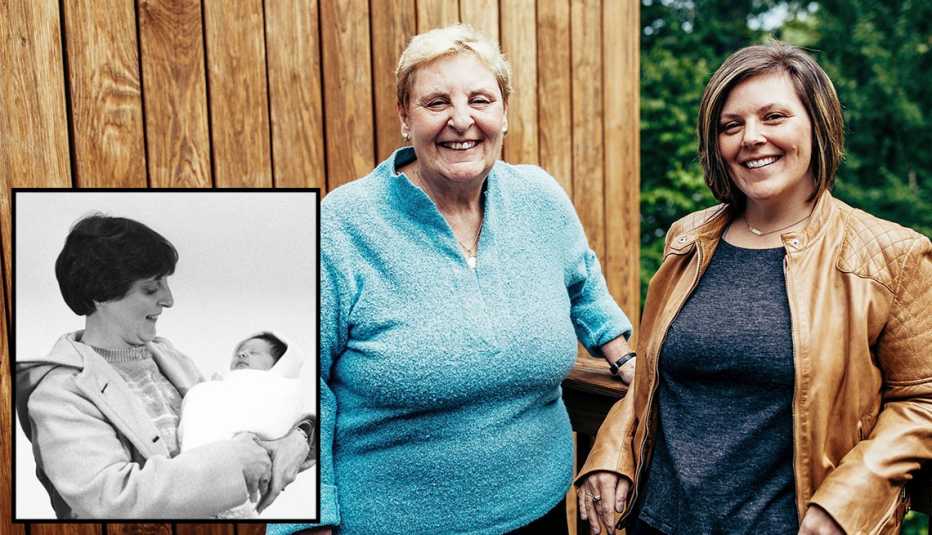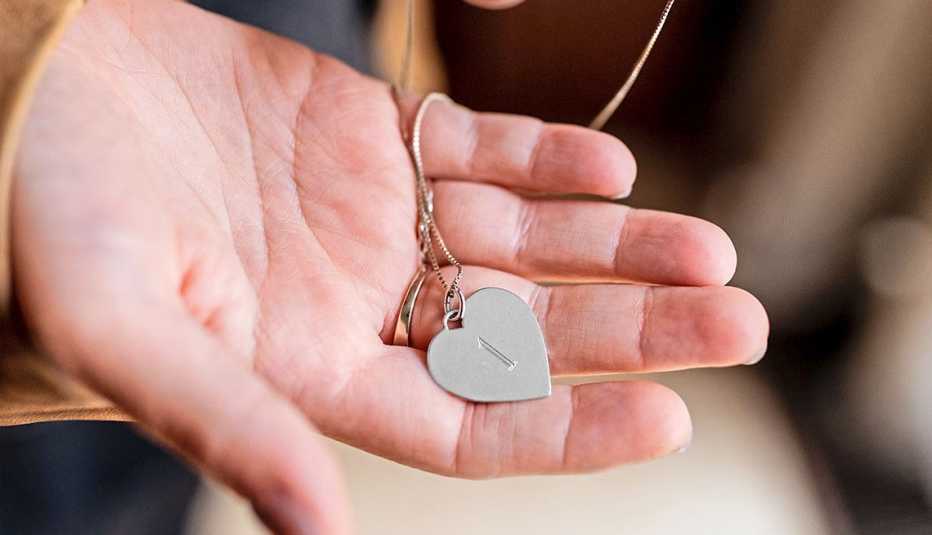AARP Hearing Center


I own a sterling-silver necklace with a heart-shaped pendant engraved with the number “1.” I wear it only on special occasions or when I speak at fertility conferences. The necklace was a childhood gift from two pioneering fertility doctors, and it’s a reminder that I’m a kind of accidental expert on reproductive technologies — although my birth was anything but an accident. Forty years ago this December 28, I became the first baby born in the U.S. via in vitro fertilization (IVF).
The event, which occurred at a hospital in Norfolk, Virginia, called for a packed-house delivery room, complete with a PBS-documentary film crew. Security guards blocked the doors to any potential intruders. On the street outside, protesters picketed against IVF, which was legal in Virginia but illegal in my parents’ home state of Massachusetts. Near the protesters, TV news crews waited for word on whether I had come out “normal.”


After a successful delivery, my mother and I were declared perfectly healthy. Howard Jones, M.D. — who, with his wife, Georgeanna Jones, M.D., had founded the fertility clinic where I was conceived — told the press, “I think this is a day of hope.”
For my parents, my birth was the fulfillment of a dream. For the United States, it signaled new possibilities for infertile couples — and a radical shift in our understanding of when and how it was possible to become a mother. In a way, IVF helped redefine the careers and family expectations of every woman in the boomer generation and younger, whether or not they ever sought fertility treatments themselves.
The Fertility Timeline
Our understanding of human reproduction is surprisingly recent — and ever expanding
- 1827 - Discovery of the existence of the human female egg
- 1884 - First successful human pregnancy via artificial insemination
- 1934 - Successful in vitro experiments on rabbits
- 1944 - First in vitro fertilization of human eggs
- 1949 - Pope Pius XII denounces fertilization of eggs outside the body.
- 1953 - First live birth via frozen sperm
- 1978 - First IVF baby, Louise Brown, is born in the U.K.
- 1981 - Birth of the writer, the first U.S.-born IVF baby
- 1983 - A child is born via egg donation in Australia.
- 1990 - Screening of an embryo for genetic defects before implantation
- 1992 - Successful use of injection of a sperm directly into an egg
- 2014 - Birth of a baby to a mother with a transplanted uterus
How it began
The first so-called test-tube baby in the world, Louise Brown, was born in 1978 in the U.K., though much of the scientific groundwork for her birth had been laid in the U.S. In 1944 two scientists at the Free Hospital for Women in Brookline, Massachusetts, were the first to successfully fertilize a human egg with sperm “in vitro” — that is, in a glass laboratory dish — but they soon ended their experiments. In 1965, while my future doctors Howard and Georgeanna Jones were practicing at Johns Hopkins University in Baltimore, they mentored a visiting British researcher as he repeated the feat. In 1973 a Columbia University physician took the next logical step: He created and then incubated a couple’s fertilized egg, planning to implant it into the woman’s uterus four days later. If he had succeeded, it would have been the first IVF pregnancy in the world. But when a hospital administrator got wind of the doctor’s project and feared controversy, he destroyed the incubating egg, and the physician resigned under pressure. Research on IVF stalled in the U.S. And that British visitor who’d worked with the Joneses in Baltimore, Robert Edwards, became part of the U.K. team that brought Louise Brown into the world.
Why did American IVF research fall behind? Public pressure and fear. Some critics questioned the ethics of creating and destroying human embryos. Others worried about the health of any children created by the technique, predicting they could have serious deformities. And some objected on religious grounds, claiming that, in the words of Moral Majority leader Jerry Falwell Sr., researchers were “delving into an area that is far too sacred for human beings to be involved in.” After the failed Columbia University IVF attempt in 1973, the federal government instituted a freeze on funding for IVF research.
But after Brown’s birth in the U.K. demonstrated just how normal a test-tube baby could be, the resistance in the U.S. began to drop away. In 1980 the Joneses, who had reached Johns Hopkins’ mandatory retirement age of 65, opened the country’s first IVF clinic, in Norfolk. As Dr. Howard once told The Washington Post, “We thought it was an alternative to fading away.” Within a year, my mother had become one of their first patients.


































































More on Health
Breakthrough Treatments for Parkinson’s, Diabetes, Depression and More
Innovative methods range from light-box therapy to a mood-adjusting sprayCan Viagra Prevent or Treat Alzheimer's?
New research looks at the popular drug's potential role in dementia
Can Eye Drops Replace Your Reading Glasses?
Medication now available to treat age-related vision loss